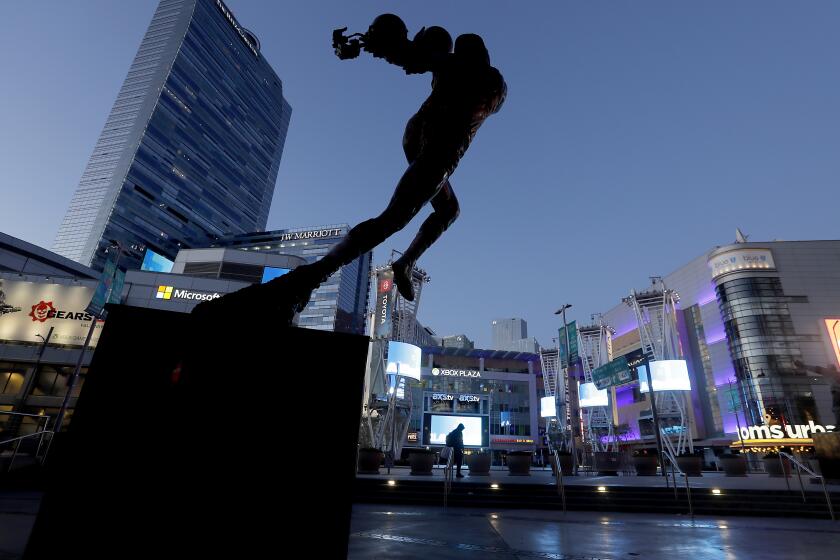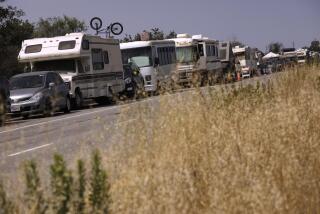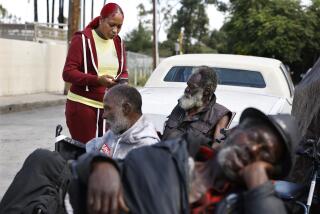L.A. rushes to open homeless shelters. But will they be ‘hotbeds’ of coronavirus infection?
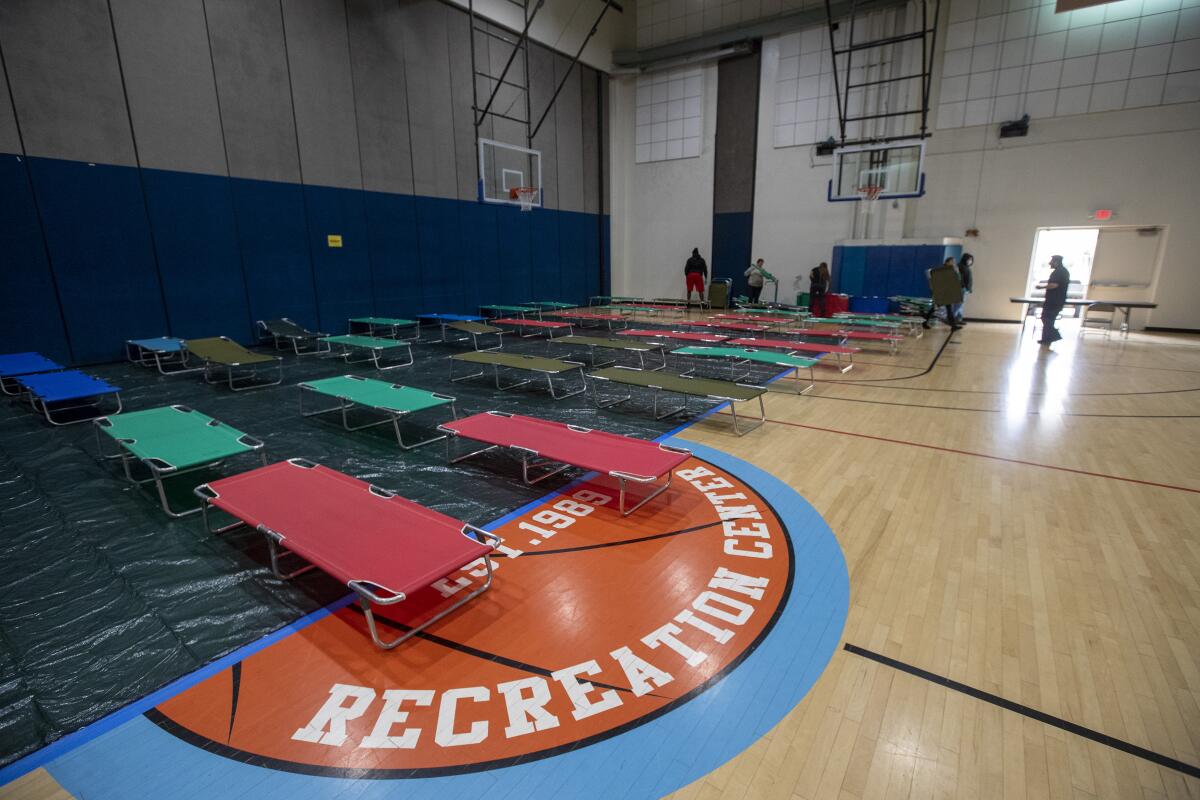
Tyrone Dixon was told to be standing out front of The Midnight Mission at 3:30 p.m. on Friday. Then, accompanied by two Los Angeles police officers, he and three other homeless people boarded a bus and were whisked out of skid row.
Several minutes later, Dixon, 53, who had his temperature taken by the officers on the bus, arrived at the Echo Park Community Center, hopeful about his prospects for a cot and hot shower.
“I’m tired of staying on these streets,” he said. “I try to stay in shelters. They have case workers. If you stay in a tent ... you’re stuck.”
Mayor Eric Garcetti’s plan for transforming 42 recreation centers into homeless shelters got its start on Friday, with city crews bringing in supplies, spacing cots and laying tarp on gymnasium floors. The initiative is part of a larger strategy to blunt the spread of the novel coronavirus among the city’s most vulnerable residents.
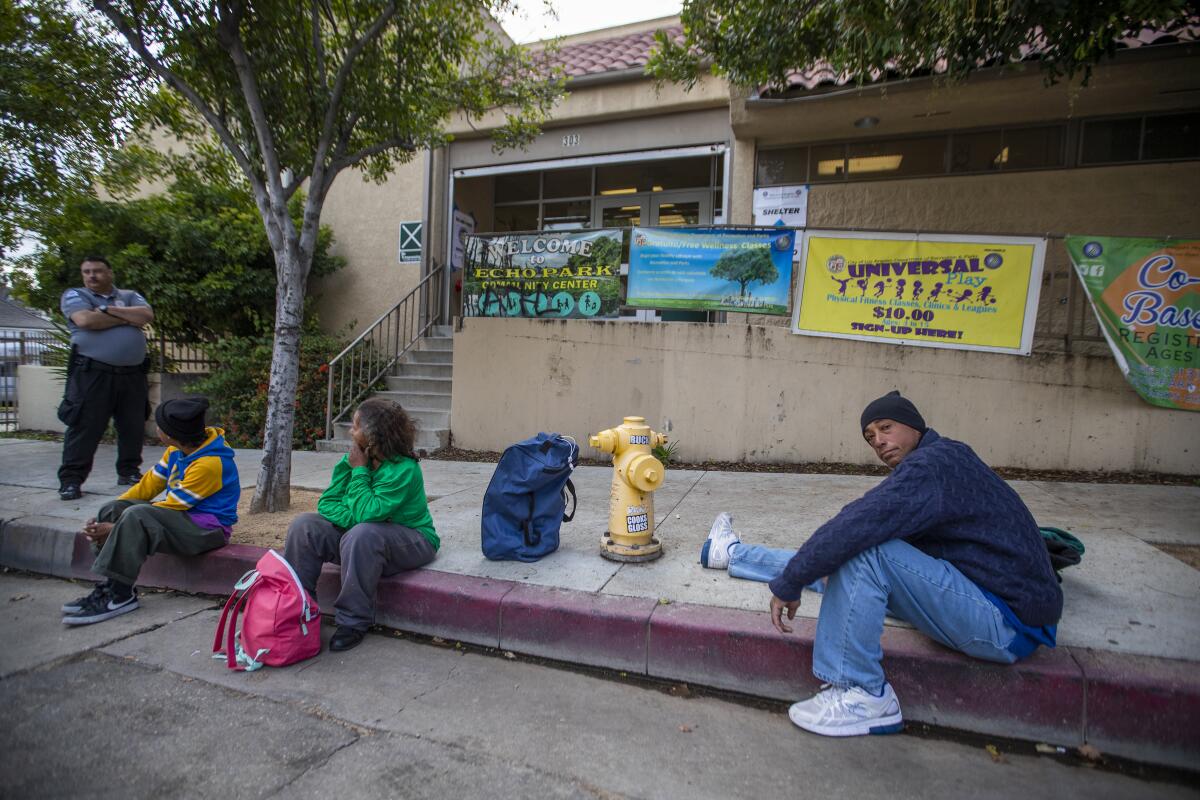
At the North Hollywood Recreation Center, city workers — some wearing masks and gloves — removed trash and wiped down drinking fountains in preparation for the influx. In Watts, workers were expecting 25 homeless men and women at the 109th Street Recreation Center.
At each site, the city will provide workers with protective equipment, including coveralls, face masks and gloves, said Ashley Rodriguez, spokeswoman for the Department of Recreation and Parks. Those who move in will receive socks, blankets and personal hygiene kits, she said.
Still, some of those living on the streets expressed serious doubts about making the move.
David Busch, a longtime activist who is homeless and lives in Venice, said he has been trying to isolate himself in his tent — and would need far more reassurance from public health experts before going into one of the converted recreation centers.
“All over the city, they’re telling people not to congregate, yet they’re telling homeless people to congregate in these recreation centers,” he said. “What protection are we going to have?”
Gov. Gavin Newsom has ordered Californians to stay at home. With businesses and popular destinations closed, The Times’ Luis Sinco documented the surreal scenes.
Eight of the shelters were scheduled to open by the end of Friday, and another five will be added over the weekend. Located in neighborhoods stretching from Woodland Hills to South Los Angeles, they are expected to accommodate a total of nearly 1,600 people.
It represents a massive jump in the shelter capacity of Los Angeles, which has long had one of the nation’s lowest ratios of shelter beds to homeless people.
The recreation centers were selected because they are wheelchair accessible, have showers on site or nearby and are located near existing homeless encampments, according to a fact sheet circulated at L.A. City Hall.
At a special meeting of the Los Angeles Homeless Services Authority commission on Thursday, housing task force chief Amy Perkins said the new shelters were being limited to about 80% of their capacity to maintain proper spacing, as recommended by public health officials. Beds are expected to be 6½ feet apart.
The County Department of Public Health was involved in designing the shelters, Perkins said.
They will be staffed by the parks department, with supervision by Homeless Services Authority staffers or employees of nonprofits with experience running shelters. Two managers and a county Department of Mental Health staffer will also be assigned to each shelter.
The Los Angeles Unified School District will prepare and deliver three meals daily, Monday through Friday, at no cost, Perkins said. The city also is working to procure a vendor to provide meals on weekends.
Perkins acknowledged that providing the shelters with adequate medical support and protective equipment is still a challenge.
“No one wants these sites to become hotbeds of infection,” she said. “But at this time, we really do not have on-site medical support. We would love to have someone who could help us with medical assessments, because obviously everyone is frightened.”
Perkins added later: “We would like to have thermometers.”
Four thousand single-use thermometers have been purchased but are on back order.
Because the city is trying to bring in homeless people who face the greatest health risks, some walk-in visitors have been directed to other shelters, nonprofit groups or government agencies, Rodriguez said.
“We’re having people show up, and we can’t accommodate them, and that’s a little sad.”
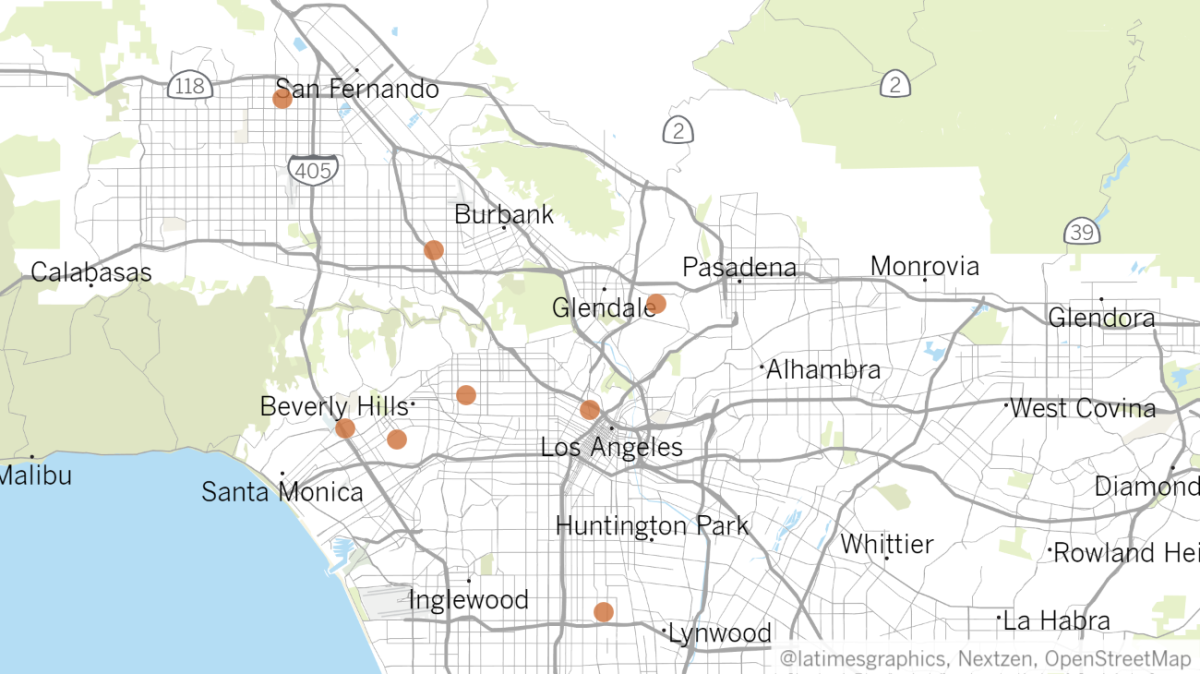
City and county officials say that admission to the shelters will be purely voluntary and that they are attempting to identify the most at-risk members of the homeless population. Outreach workers were compiling lists of candidates for the shelters who are elderly or medically fragile.
Despite plans for ensuring social distancing at the shelters, some homeless Angelenos said they feared the recreation centers would become hotspots for the virus.
In Venice, Catherine Schultis and her partner, Richard Campbell, live in a van and make money as artists on the boardwalk — work that has evaporated as the crowds have disappeared following Gov. Gavin Newsom’s order for businesses to close and residents to stay at home. Going to a shelter, she said, sounds like a horrible idea.
“How are we supposed to maintain six feet away from people?” Schultis asked. “I’ve spent enough time in shelters to know that once one person catches something and goes into a common area, everyone has it within days.”
In Chatsworth, Rita Dunn said she and other homeless people have had nowhere to shower since Garcetti directed gyms to shut down earlier this week. Last night, some of them went to a grocery store and found little left on the shelves. The only milk left at the store, Dunn said, was Snickers-flavored.
Still, Dunn is not eager to head to a shelter.
“I don’t think that cramming in beds is going to be effective,” she said.
The city has assigned Department of Transportation buses to get people to and from the shelters, and bus routes have been designed to make stops at known homeless encampments.
On Friday, bus driver Jermaine Peterson was waiting in one of two shuttle buses parked outside the Echo Park Community Center. He said he was told he’d be driving for the shelter program, but the rest was “all a mystery.” He had received a mask, but someone later told him it wasn’t the right kind.
Because of public health requirements limiting gatherings to 10 people, only seven homeless people were permitted to ride at a time; two police officers also were to be on each bus.
At a briefing on Friday, Garcetti said he plans to visit some of the shelters this weekend.
More to Read
Sign up for Essential California
The most important California stories and recommendations in your inbox every morning.
You may occasionally receive promotional content from the Los Angeles Times.
